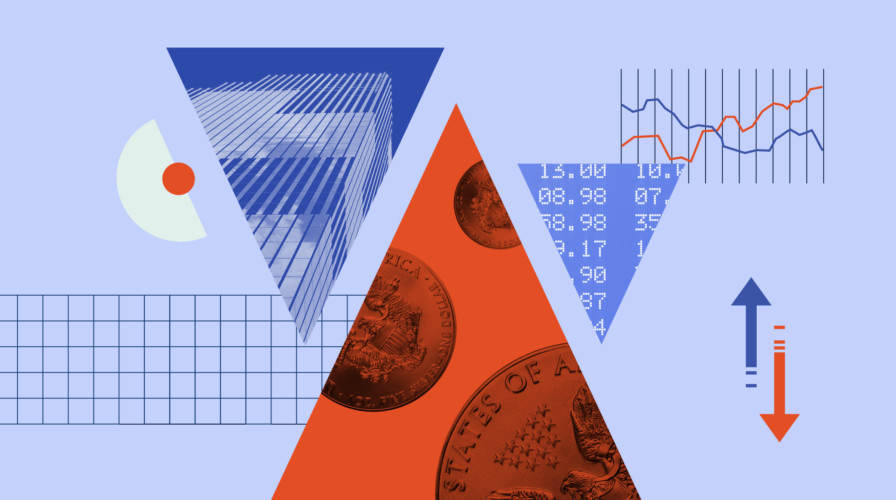
The cryptocurrency market is a relentless engine of innovation. It moves at a breathtaking pace, with new technologies, narratives, and investment theses emerging in the blink of an eye. What was a dominant trend last year can quickly become old news, while a niche concept can explode into a multi-billion dollar sector.
For any serious investor in the digital asset space, simply holding Bitcoin and Ethereum is no longer enough. To stay ahead of the curve and identify the next wave of growth, you must understand the powerful underlying trends that are shaping the future of the industry.
This is not about chasing short-term hype. It is about identifying the fundamental shifts in technology and adoption that are creating real, long-term value. This is your guide to the most important crypto trends that savvy investors are watching closely this year.
Disclaimer: This article is for informational purposes only and is not investment advice. Cryptocurrency is a highly speculative and volatile asset class. You should conduct your own research and consult a qualified financial advisor before making any investment decisions.
1. The Tokenization of Real World Assets (RWAs)
This is arguably the single most important and potentially largest trend in crypto. Real World Assets (RWAs) refer to the process of bringing traditional, off-chain assets onto the blockchain in the form of a token.
Think of assets like real estate, private equity, U.S. Treasury bonds, and carbon credits. Historically, these have been illiquid and accessible only to institutional or accredited investors.
Why It’s a Game-Changer:
-
Fractionalization: Tokenization allows a multi-million dollar commercial building to be divided into thousands of small, digital tokens. This allows small retail investors to own a fractional piece of an asset they could never afford before.
-
Liquidity: It can turn a highly illiquid asset, like a stake in a private company, into a liquid token that can be traded 24/7 on a global market.
-
Transparency and Efficiency: All ownership and transaction records are stored immutably on the blockchain, increasing transparency and reducing the need for costly intermediaries.
Major financial institutions are actively exploring this space, signaling that the “tokenization of everything” is a trend with massive long-term potential.
2. The Rise of Decentralized Physical Infrastructure Networks (DePIN)
DePIN is a revolutionary new model for building and maintaining real-world infrastructure using blockchain and token incentives. Instead of a single corporation (like AT&T or Google) building a network, DePIN projects incentivize thousands of individuals around the world to contribute their own hardware to create a decentralized, user-owned network.
Why It’s a Game-Changer:
-
Real-World Utility: DePIN projects are creating tangible, real-world services. Examples include decentralized wireless networks (like Helium), cloud storage networks, and energy grids.
-
Cost Efficiency: A decentralized, crowdsourced model can build out infrastructure at a fraction of the cost of a traditional, centralized corporation.
-
Token Incentives: Individuals who contribute their hardware (e.g., a wireless hotspot or a hard drive) are rewarded with the project’s native crypto token, creating a powerful flywheel effect for network growth.
DePIN represents a clear and compelling use case for blockchain technology beyond just finance. For a deeper dive, check out [Our Beginner’s Guide to Understanding Cryptocurrency](your-internal-link-here).
3. The Continued Expansion of Layer 2 Scaling Solutions
While Ethereum is the dominant smart contract platform, its popularity has led to high transaction fees (gas fees) and network congestion. Layer 2 (L2) scaling solutions are separate blockchains that are built on top of Ethereum to solve this problem.
L2s process transactions quickly and cheaply on their own chain and then “roll up” batches of these transactions to be settled on the main Ethereum blockchain.
Why It’s a Critical Trend:
-
They Make Ethereum Usable: L2s like Arbitrum, Optimism, and Base are what make it possible for the average user to interact with DeFi and Web3 applications without paying exorbitant fees.
-
A Thriving Ecosystem: A huge amount of innovation and user activity is migrating to these L2 networks. They are becoming major hubs of the decentralized economy in their own right.
-
The “Modular Blockchain” Thesis: This trend is part of a larger shift toward a future where blockchains are more specialized and interconnected, with Ethereum serving as the core security and settlement layer.
4. The Intersection of AI and Crypto
Artificial Intelligence (AI) and crypto are the two most disruptive technologies of our time, and their inevitable convergence is creating a fascinating new investment sector.
Key Areas of Intersection:
-
Decentralized AI Marketplaces: Platforms that allow developers to access or contribute to AI models and data in a permissionless way.
-
Verifiable Computation: Using blockchain to prove that an AI computation was performed correctly and without tampering.
-
AI-Powered Agents: Autonomous AI agents that can own their own crypto wallets and interact with decentralized applications on behalf of users.
Why It’s a Trend to Watch:
This sector is still in its infancy, making it highly speculative. However, the potential synergies between these two powerful technologies are immense. The projects that successfully bridge the worlds of AI and crypto could become the giants of the next decade.
Conclusion: Beyond the Price Ticker
The cryptocurrency market in 2025 is far more sophisticated than it was just a few years ago. Smart investors are looking beyond the daily price fluctuations of Bitcoin and are focusing on the underlying technological trends that are creating sustainable, long-term value.
The tokenization of real-world assets, the growth of DePIN, the expansion of Layer 2s, and the convergence of AI and crypto are not just fleeting narratives. They are fundamental shifts that are building the foundation for the next generation of the internet and the global financial system. By understanding these trends, you can position your portfolio on the cutting edge of innovation.
You can aslo read HERE more about this article.



